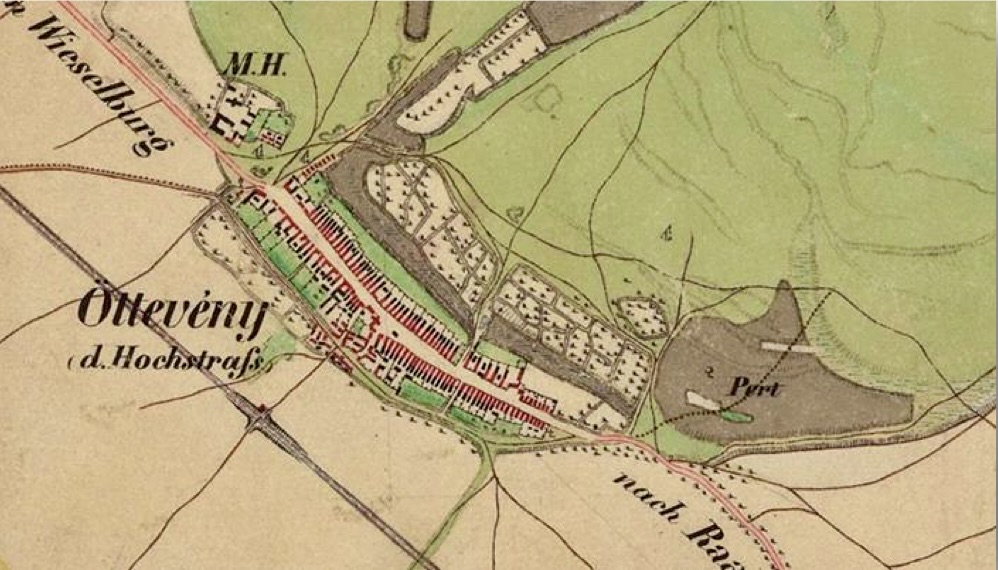HISTORY OF THE CASTLE

The Földváry castle is located in the village of Öttevény, 15 km from Győr, in Western Transdanubia.
The village, which has undergone many historical changes over the years, has preserved its historical importance and rich heritage to this day. It is first mentioned in written sources in the 13th century as Öttevény, but its history goes back much further than that, with archaeological finds showing that the area was inhabited as early as the Bronze Age. In the Middle Ages, the village belonged to the Komárom Castle, but was abandoned during the Ottoman period.



The castle was built in 1870 by Baron Földváry Miklós de Bernátfalva (1840-1914), one of the former largest landowners, for his wife, and has since become a symbol of the village. The building was originally a "gentleman's lodge", but was later extended into a castle and inherited by Miklós Földváry's daughter Valéria (1872-1964), who married Count Károlly Csáky (1873-1945), then Minister of Defence, in 1895.
Thanks to its location, the castle was a regular meeting place for the political elite of the time, and according to legend, it was here that many decisions of national importance were actually taken.


From their union was born Count Andor Csáky. He was a keen magnate, a landowner in öttevény through his mother. In his youth he was first attracted to poetry, writing poems, then articles on economics, and finally photography. He then spent several years studying in Germany and France, where he became acquainted with the film industry, but also corresponded with the American Film Association, which he consulted about his forthcoming film.
He was married three times, his first wife was Erzsébet Ilona Csáky of Kőrsumih and Adorján (18 October 1900 - Budapest, 24 January 1974), whom he married on 28 March 1919 and from whom he had daughters Andrea (b. 25 April 1920), Szonja (b. Győr, 15 December 1929) and Andrea Auguszta Viktória. After their divorce on 5 April 1930, he married twice more, to Maria Benz (b. 21 March 1907) and then to Marion Kégl (b. January 1906).
In 1931 he made a two-act (about 600 metres) silent short film drama on the Öttevényi estate. The cast was made up of student and amateur actors and actresses.



Rumour has it that Count Csáky lost the castle on a card, which was then passed on to the Kusler family, who were on the castle's staff. They were deprived of their property rights by nationalisation at the same time as the Russians invaded. The family moved into a farm building and the castle furniture was raffled off to the interested parties. Subsequently, a large part of the estate was parcelled out and distributed free of charge.
NAPJAINKBAN...

In the middle of the 20th century, the building became the property of the Wagon Factory, and then served various functions. Among other things, it was used as an emergency home, a pharmacy and a nurses' home.
ÉDÁSZ Rt. bought the dilapidated building in 1988, and after four years of work restored it to its original state, finally a modern 3-star hotel was built in the building.
A few years later, the castle was bought by the world-famous Slovak tennis star Daniela Hantuchova, who took great care in preserving and improving the building until it was closed. During the reconstruction, the original character and style of the castle was preserved, so that it still reflects the atmosphere of the last century.



After 2 years of silent solitude after its closure, the old building was left in a state of disrepair, which left its technical condition significantly affected and the park became overgrown.
In May 2023, it was acquired by the Matusz family from Győr, giving new impetus to its development. The castle is currently undergoing a complete energy and interior renovation and is expected to reopen its doors to the public on 30 April 2024.
The history of Öttevény village and Földváry castle has been intertwined over the centuries, making it one of the most important elements of the local historical heritage for the villagers. The local people are proud of their past and continue to preserve the historic spirit of the place.
